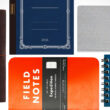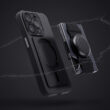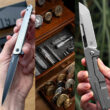If you’ve ever shopped around for a pocket knife for everyday carry, you’d know there’s a staggering amount of options to choose from. Trying to make sense of the many types of knives and their subtle differences can get overwhelming. Of the many factors to consider when choosing something as personal as a knife, its locking mechanism is one of the most important. You should know what type of lock, if any, you should have depending on your needs and preferences before investing in a quality knife.
In this guide, we’ll show you some of the most common types of locking mechanisms you’d find in a desirable EDC knife. You’ll discover the advantages of having a knife that locks, which type is best suited for your EDC, how they work, and knives to consider if the locking type isn’t an option where you live.
Why EDC a locking blade?
Portability should be a major focus when looking for a tool to keep on your person in your pockets or bag. In the case of pocket knives for EDC, folding knives offer an ideal balance of pocketability and functionality.
When folded closed, they become more compact and easier to carry as there’s no exposed sharp edge to worry about. When fully opened, you get the balance, ergonomics, and utility of a non-folding (fixed) blade. Fixed blades are inherently stronger as there’s no moving parts to fail under stress in extreme cases or after repeated hard use.

What about folding knives lets you enjoy the best of both worlds?
It’s all in the lock.
The locking mechanism adds extra safety to using your EDC blade. It lets you blow through tougher tasks over a longer lifetime on a knife you can actually carry everyday. It’s something you’d be using often, so it’s best to get acquainted with what your options are.
Let’s take a look at some of the top types of locking mechanisms for EDC, and a few options for those in areas where locking blades are restricted.
Lockback
A lock back mechanism is what you see on many traditional folding knives. It’s essentially made of a “spine” on a spring. When the knife is opened, the spine locks into a notch on the back of the blade. To close the knife, push down on the exposed part of the spine (usually found in the middle or rear of the handle) to pop up the part of the spine in contact with the blade. This disengages the lock, allowing you to swing the blade to a closed position.
The benefits of a lockback include reliable strength, safety, and ambidextrous operation. The unlock “button” is out of the way of your grip when using the knife, meaning you’re unlikely to accidentally disengage the lock and have it close on you. It also keeps your hands clear of the blade’s path when closing, minimizing the risk of cutting yourself.
One disadvantage is that while it’s possible to close a lockback with one hand, it isn’t easy. You’d likely need to switch grips and take extra care when closing the blade.
Lockback examples:
- Spyderco Native 5 Lightweight
- Kansept Knives Swan Wedge
- Cold Steel AD-10 (which uses a trademark modified lockback called the Tri-Ad lock)
Liner Lock
Liner locks are one of the more common mechanisms seen on folding knives. Its main component is a side spring bar located on the same side as sharp edge of the blade, “lining” the inside of the handle. When the knife is closed, the spring bar is held under tension. When fully opened, that tension slips the bar inward to make contact with the end of the blade, keeping it firmly in place and preventing it from closing. To disengage a liner lock, you have to use your thumb to push the spring bar “down” (towards the pocket clip in the example knife shown above) so that it clears contact from the blade, allowing you to fold it back into the handle.
Liner locks are beneficial because you can close the knife with one hand without switching grip, ideal for when you need both hands on the job. You’ll find liner locks in both entry-level and high-end knives. It’s a lock type that appeals to both knife newbies and enthusiasts alike.
If you’ll be using your knife for heavy-duty tasks, you should know liner locks typically aren’t as robust as other locking systems. They’re still plenty strong, but because they’re typically made from a thinner or softer piece of metal, they’re more prone to wearing out compared to a beefy frame lock, for example.
Liner lock examples:
Frame Lock
Think of the frame lock as a beefed up version of the liner lock, except instead of an internal spring bar moving into place, it’s part of the handle itself. Frame lock knives tend to be stronger than liner locks, as the piece of metal that slips into place is more substantial than that in a liner. Because of their similarity to liner locks, closing a frame lock knife is virtually the same — push down on the spring bar so it no longer blocks the end of the blade, remove your thumb from the path, then fold the knife closed.
This type of locking system puts a large portion of metal against the blade, ensuring a strong lockup for piercing, cutting, slicing, and other heavy-duty tasks. Frame locks are seen in lots of mid to upper range knives, typically crafted from titanium. In the example shown here, a stainless steel insert interfaces with the blade as it both takes longer to wear out than titanium, and stabilizes the bar so you don’t weaken it by pushing it too far.
Frame lock examples:
- Spyderco Techno 2
- Zero Tolerance 0762 TDS (which uses a sub-frame lock where the lockbar has a different material to the handle, but the two function as one cohesive piece)
- Chris Reeve Sebenza 31
AXIS Lock
This locking system was originally made and patented in 1988 by knifemakers Bill McHenry and Jason Williams, who then sold the rights to the mechanism to Benchmade who renamed it to the AXIS lock and have since used it in dozens of iconic knife models to this day. And while the patent itself expired in 2018 leading to the development of similar mechanisms from other knifemakers, the AXIS lock branding and trademark remains with Benchmade and is still used in their most recent designs.
Here’s how it works: The lock is made up of a spring-tensioned bar (the spring itself called an omega spring) that slides back and forth on a track cut into the handles of the knife. The end of each blade featuring an AXIS lock (hidden by the handle) has a flat spot that allows a spring-tensioned bar to lock into place when the knife is opened. To close the knife, you pull the bar towards the back of the knife using the thumb studs, and fold the blade shut.
Right handers and southpaws alike can appreciate how easy it is to use this lock, because the bar is accessible from both sides of the knife handle. Due to the nature of the lock it can cause wear and tear over time on the omega spring causing it to break, but due to the ubiquity and popularity of the lock and the knives it’s on, it’s become easier to maintain and repair with standard tools.

AXIS Lock examples:
Slipjoint and Friction Folder
Just to be clear, these types of blades don’t have a true “lock” as far as laws are concerned, but they’re still viable options for EDC.
Slipjoints are most commonly seen in Swiss Army Knives. Typically these knives require two hands to open and close safely. They’re made up of a spring bar and a specially shaped blade. To open the knife, you pull on the blade to overcome the pressure from the spring, snapping the blade into place. To close it, make sure your fingers are out of the way of the sharp edge, and push back down.
Friction folders are similar, except they don’t have a spring bar. Instead, the knife’s blade is held in place simply by friction between the blade steel and the knife scales.
One of the main advantages of these types of knives is their legality. They’re also nice to carry because they’re simple and easy to use. But its worth repeating that these knives don’t have a true lockup, so they’re not the best for heavier duty tasks.
Slipjoint examples:
Special Mention: Compression Lock
While the Compression Lock itself isn’t a universal lock across the knife industry as it’s a Spyderco trademark, nevertheless it’s one we need to mention due to how iconic the knives that come with it have become.
There’s a common misconception that the Compression Lock is “just a liner lock on the back,” and while functionally the mechanism is the same, there’s a lot more to it that gives it its signature strength and reliability. In these knives, the blades’ tang ramps faces upward rather than towards the end of the handle, and when open, sandwiches the lock bar between the ramp and a stop pin. Defeating the lock would mean being physically able to crush the lock bar between the ramp and stop pin, and by design with such tight tolerances, that would be an incredibly difficult feat.
While its strength gets a substantial upgrade on a Compression Lock, its ease of use still allows the knife to be safely and easily closed with one hand like a liner lock.
Compression Lock examples:
By now, you should be more familiar with your options to better choose the a knife worthy of your pocket.
Do you have a favorite type of lock to recommend? Leave a comment with your EDC knife of choice and tell us why you like its lockup to help your fellow EDCers and prospective knife buyers carry smarter.
Words and images by Ed Jelley, Bernard Capulong, and Mikey Bautista.


















